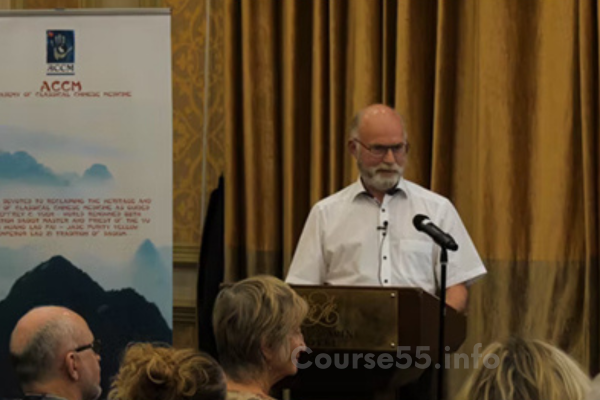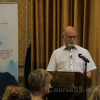Healing Approach Based on the Early Roots of Daoism – Shamanism By Jeffrey Yuen & Paul McCarthy
$30.00 Original price was: $30.00.$15.40Current price is: $15.40.
The healing approach based on the early roots of Daoism – Shamanism – Immediate Download!
Let See The Content Inside This Course:

Description:
For ages, a significant part of Eastern spirituality has been the practice of healing via the fusion of shamanic and Daoism. According to Jeffrey Yuen and Paul McCarthy, this viewpoint clarifies the significance of combining traditional knowledge with modern therapeutic techniques. Yuen and McCarthy support a holistic approach that promotes both spiritual and physical well-being by highlighting the roles of nature, human transformation, and shamanic concepts in the healing process. Their teachings offer a path for people who want to use nature’s healing properties to reestablish a connection with their inner selves. We go deeper into these ideas and examine how they appear in real-world applications in this piece.

Daoism and Shamanism as the Foundations of Healing
Introduction: Daoism and shamanism provide a spiritual and medical basis for healing techniques, which have deep and intricate roots. This section looks at how various customs work together and support an all-encompassing strategy for wellbeing and health.
The foundation of many Eastern healing systems is the connection between shamanism and daoism. According to Yuen and McCarthy, early shamans had close bonds with nature, which enabled them to see beyond the realm of everyday reality. This thought is in line with the view that healing emphasizes a conversation between the spirit, body, and universe and goes beyond simple physical restoration. They emphasize that shamanism serves more as a prism through which to see healing as a dynamic interplay of relationships within nature than it does as a collection of techniques.
Harmony with Nature as a Healing Method
According to Yuen and McCarthy, nature is essential to the healing process. They stress that people might re-establish a connection with more profound realities through the tranquility of natural settings. This relationship helps people see healing as a complex process that goes beyond the material and touches on the spiritual.
People have an emotional and intuitive conversation that guides their healing process when they spend time in nature, whether it’s through the soft sound of the wind or the rustle of leaves. It promotes the understanding that the universe is teeming with healing energy and is kind of like a dance between the ego and the environment. Practitioners can access powerful sources of healing power by cultivating a relationship with these energies—plants, water, soil, and sky.
Exploring Spiritual Dimensions of Disease
One of the most powerful insights from Yuen and McCarthy’s teachings is the assertion that all diseases have spiritual origins. This perspective invites individuals to look beyond the physical symptoms to understand the underlying spiritual dissonance. By navigating these spiritual dimensions, practitioners can address the root causes of ailments, leading to more profound and lasting healing outcomes.
Personal anecdotes shared by Yuen about his lineage reinforce this idea, as he describes Lady Wei’s deep affection for the plants she gathered for healing. This connection illustrates that healing practices are not merely transactional but rather relational engagements with the very fabric of nature. Healing is, therefore, a form of communion a dialogue that requires openness, humility, and respect for the natural world and its wisdom.
Consciousness’s Function in Healing
Introduction: A key component of the therapeutic strategy advocated by Yuen and McCarthy is the investigation of consciousness. This section will look at how real healing can result from changes in one’s consciousness.
The idea that healing entails a shift in consciousness is fundamental to Yuen and McCarthy’s teachings. Healing can be facilitated by changes in one’s self-perception and perception of their surroundings. According to Yuen, a lot of physical illnesses are caused by disturbances in the spirit or consciousness. Consequently, recovery depends on resolving these disturbances.
Handling Changed Consciousness States
Practitioners are urged to use particular healing-promoting practices to navigate altered states of consciousness. This investigation frequently mimics the trips made by shamans who travel into invisible worlds in pursuit of knowledge and healing. Yuen stresses the importance of safety and anchoring in these encounters, nevertheless. The changes brought about by altered states might become overwhelming or even harmful if they are not properly grounded.
As practitioners explore various realms of consciousness, grounding techniques like deep breathing, meditation, or connecting with natural components like water or stone help to stabilize them. This is when the shamanic tools come in handy, helping practitioners navigate often difficult and illuminating situations.
Practical Applications: Meditative Practices
The seminars conducted by Yuen and McCarthy tirelessly focus on practical exercises that cultivate the necessary skills for diving into both shamanistic and Daoist traditions. These exercises can include:
- Meditative Walks: Immersing oneself in nature while practicing mindfulness.
- Shamanic Journeying: Utilizing intention and visualization to connect with spirit guides.
- Nature Communion: Engaging in rituals that enhance the relationship with natural elements.
These practices not only facilitate a deeper engagement with the spiritual aspects of healing but also reinforce the essential connection to the natural world. Participants come away with a renewed understanding of themselves and their environment, capable of fostering a vibrant, healing presence.
The Integration of Shamanistic Tools in Healing
Introduction: The integration of shamanistic tools into healing practices is a key element of Yuen and McCarthy’s approach. This section will explore how these tools serve to enhance and deepen therapeutic outcomes.
By emphasizing the role of shamanistic tools, Yuen and McCarthy present a compelling case for their inclusion in contemporary healing practices. These tools whether they are symbols, chants, or physical artifacts serve as conduits for connecting with spiritual energies and harnessing them for healing.
The Significance of Inner Change
One of the central tenets of this healing approach stresses the importance of inner change over mere external rituals. Yuen posits that effective healing transcends superficial treatments and points toward a fundamental transformation within individuals. This transformative process calls for participants to engage deeply with their emotions, beliefs, and responses to life’s challenges.
Developing a Peaceful Coexistence with the Environment
Practitioners are urged to cultivate a harmonious relationship with their surroundings in order to accomplish this inward transformation. This entails cultivating an awareness that health is not simply a person’s story but rather a part of a larger tapestry of life and acknowledging the coexistence of the self within the larger world. Yuen’s approach encourages people to become adept at listening to the wisdom and teachings of healing nature.
Yuen and McCarthy stress that amazing changes can be facilitated by cultivating vulnerability and the bravery to face one’s innermost self. In order to ground their healing in intentional activities, participants are frequently urged to express their objectives when using shamanic instruments.
Anecdotal evidence and case studies
Participants’ personal experiences frequently demonstrate how successful these techniques are. After interacting with nature through shamanic techniques, many people report experiencing profound changes in their life. Better emotional stability, heightened self-awareness, and an improved capacity to handle life’s challenges are noted in the observations.
These stories not only support Yuen and McCarthy’s holistic approach to healing, but they also emphasize the significant effects of reestablishing a connection with the four basic components of life—earth, water, fire, and air.
Conclusion
The healing approach presented by Jeffrey Yuen and Paul McCarthy intertwines Daoism and shamanism in a remarkable tapestry that seeks to redefine healing as an integrated and holistic process. Their teachings underscore the importance of intimate relationships with nature, the exploration of consciousness, and the transformational potential of spiritual practices. By fostering a greater understanding of oneself and one’s connection to the universe, individuals can embark on meaningful healing journeys that encompass body, spirit, and all elements of existence. We are invited to revisit ancient insights and adapt them for contemporary wellness, ensuring that the wisdom of our forebears continues to guide us in our quest for balance and harmony.
Frequently Requested Enquiries:
Innovation in Business Models: We employ a group buying strategy that allows customers to divide costs and receive a lower rate for popular courses. Despite content providers’ concerns about distribution tactics, this approach benefits low-income individuals.
Legal Aspects: The legality of our conduct raises a number of complex issues. Although we do not have the course developer’s official permission to redistribute their content, there are no clear resale restrictions stated at the time of purchase. We have the opportunity to provide affordable educational resources because of this uncertainty.
Quality Control: We ensure that all of the course materials we purchase are identical to those supplied by the writers. However, it is important to understand that we are not approved vendors. Consequently, our products don’t include:
– In-person consultations or phone conversations with the course developer for advice.
– Access to sites or organizations that are exclusive to authors.
– Engaging in private forums.
– Simple email support from the author or their team.
By offering these courses independently, without the premium services of the official channels, we hope to reduce the barrier to education. We appreciate your understanding of our unique approach.
Be the first to review “Healing Approach Based on the Early Roots of Daoism – Shamanism By Jeffrey Yuen & Paul McCarthy” Cancel reply
You must be logged in to post a review.

















Reviews
There are no reviews yet.